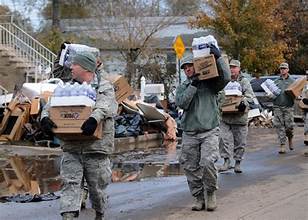Homeownership is a dream come true for many, but it can quickly turn into a nightmare when financial hardships strike. Unforeseen circumstances such as job loss, medical emergencies, or natural disasters can leave homeowners struggling to make ends meet. In such dire situations, emergency assistance programs become a lifeline, providing much-needed support and relief.
In this comprehensive guide, we will explore the various emergency assistance programs available for struggling homeowners, shedding light on how they work and who is eligible for assistance.
Understanding the Need for Emergency Assistance
Life is unpredictable, and financial stability can be disrupted in the blink of an eye. When homeowners face unexpected challenges like sudden unemployment, illness, or property damage, they may find themselves unable to cover their mortgage payments. This is where emergency assistance programs step in to bridge the gap between financial distress and stability.
Types of Emergency Assistance Programs
Emergency assistance programs come in various forms, each tailored to specific needs and situations. Let’s delve into some of the most common types:
1. Mortgage Payment Assistance
Mortgage payment assistance programs are designed to help struggling homeowners make their monthly mortgage payments. These programs may offer temporary relief by covering a portion of the payment or deferring payments altogether until the homeowner’s financial situation improves.
The average payout for mortgage payment assistance can vary widely depending on the specific program, the homeowner’s financial situation, and the region in which they reside. These assistance programs are typically designed to provide temporary relief and are not meant to cover the entire mortgage payment in most cases. Instead, they aim to bridge the gap between the homeowner’s reduced income and their mortgage obligation.
On average, mortgage payment assistance programs may cover a portion of the monthly mortgage payment, such as 30% to 50%, for a limited period. The exact amount and duration of assistance can vary greatly, and some programs may have caps on the total assistance provided.
2. Loan Modification Programs
Loan modification programs are aimed at permanently adjusting the terms of a homeowner’s mortgage loan. This could involve reducing the interest rate, extending the loan term, or even reducing the principal balance to make monthly payments more affordable.
The average payout for Loan Modification Programs does not typically involve a direct monetary payout to homeowners. Instead, these programs aim to modify the terms of the existing mortgage loan to make it more manageable and affordable for the homeowner.
Loan Modification Programs can result in various adjustments, such as reducing the interest rate, extending the loan term, or even reducing the principal balance. These modifications are intended to lower the homeowner’s monthly mortgage payments or make other changes to the loan terms, thereby helping them avoid foreclosure and remain in their homes.
So, instead of a cash payout, the “payout” from a Loan Modification Program is the benefit of having a more affordable and sustainable mortgage payment, which allows the homeowner to continue making payments and retain their home. The specific terms of the loan modification will vary based on the homeowner’s financial situation and the guidelines of the program or lender, but it does not typically involve receiving money directly from the program.
3. Emergency Grants
Emergency grants provide direct financial assistance to homeowners facing imminent foreclosure. These grants can help cover overdue mortgage payments, property taxes, or repair costs in the case of natural disasters.
The average payout for Emergency Grants provided through various assistance programs can vary significantly depending on the program, the homeowner’s specific circumstances, and the type of emergency for which the grant is being awarded. Emergency Grants are typically designed to offer direct financial assistance to homeowners facing imminent foreclosure or other housing-related crises.
The amount of an Emergency Grant can range from a few hundred dollars to several thousand dollars, and in some cases, it may cover overdue mortgage payments, property taxes, or repair costs in the event of natural disasters.
The specific payout amount is determined by factors such as:
- The severity of the homeowner’s financial hardship.
- The program’s available funding and budget constraints.
- The type of emergency or crisis the homeowner is facing (e.g., foreclosure, property damage, medical emergency).
To find out the exact payout amount for Emergency Grants, homeowners should inquire with the specific assistance program they are applying to, as each program may have its own eligibility criteria and payout guidelines. It’s essential for homeowners in need of emergency assistance to seek out and apply to relevant programs promptly to explore the available options and potential grant amounts.
4. Housing Counseling Services
Many homeowners are unaware of the assistance options available to them. Housing counseling services offer guidance and support to help homeowners navigate their financial challenges. They can connect homeowners with appropriate assistance programs and provide valuable financial education.
Eligibility Criteria
Eligibility for emergency assistance programs varies depending on the program and the homeowner’s circumstances. Common eligibility criteria include:
- Demonstrated financial hardship.
- Proof of homeownership
- Ability to show a willingness to work towards a sustainable solution.
- Meeting income limits, which vary by program.
It’s essential for struggling homeowners to research and inquire about the specific requirements of the program they are interested in.
Application Process
Applying for emergency assistance programs typically involves the following steps:
1. Documentation
Homeowners must gather and organize the necessary documentation, including proof of income, mortgage statements, and evidence of financial hardship.
2. Contacting the Program
Reach out to the appropriate assistance program or housing counseling agency. Many programs have dedicated hotlines or online application portals for convenience.
3. Assessment
The homeowner’s financial situation will be assessed to determine eligibility and the level of assistance required.
4. Assistance Plan
Once approved, a customized assistance plan will be developed, outlining the terms and conditions of the aid provided.
Benefits of Emergency Assistance Programs
Emergency assistance programs offer numerous benefits to struggling homeowners.
Preventing Foreclosure
The most significant advantage is preventing foreclosure, allowing homeowners to retain their homes and rebuild their financial stability.
Reduced Stress
These programs alleviate the stress and anxiety associated with financial hardship, giving homeowners peace of mind.
Financial Stability
By providing temporary relief or long-term modifications, these programs help homeowners regain financial stability.
Conclusion
In times of financial crisis, emergency assistance programs for struggling homeowners play a vital role in preventing homelessness and preserving the dream of homeownership. These programs offer various forms of support, including mortgage payment assistance, loan modification, emergency grants, and housing counseling services.

